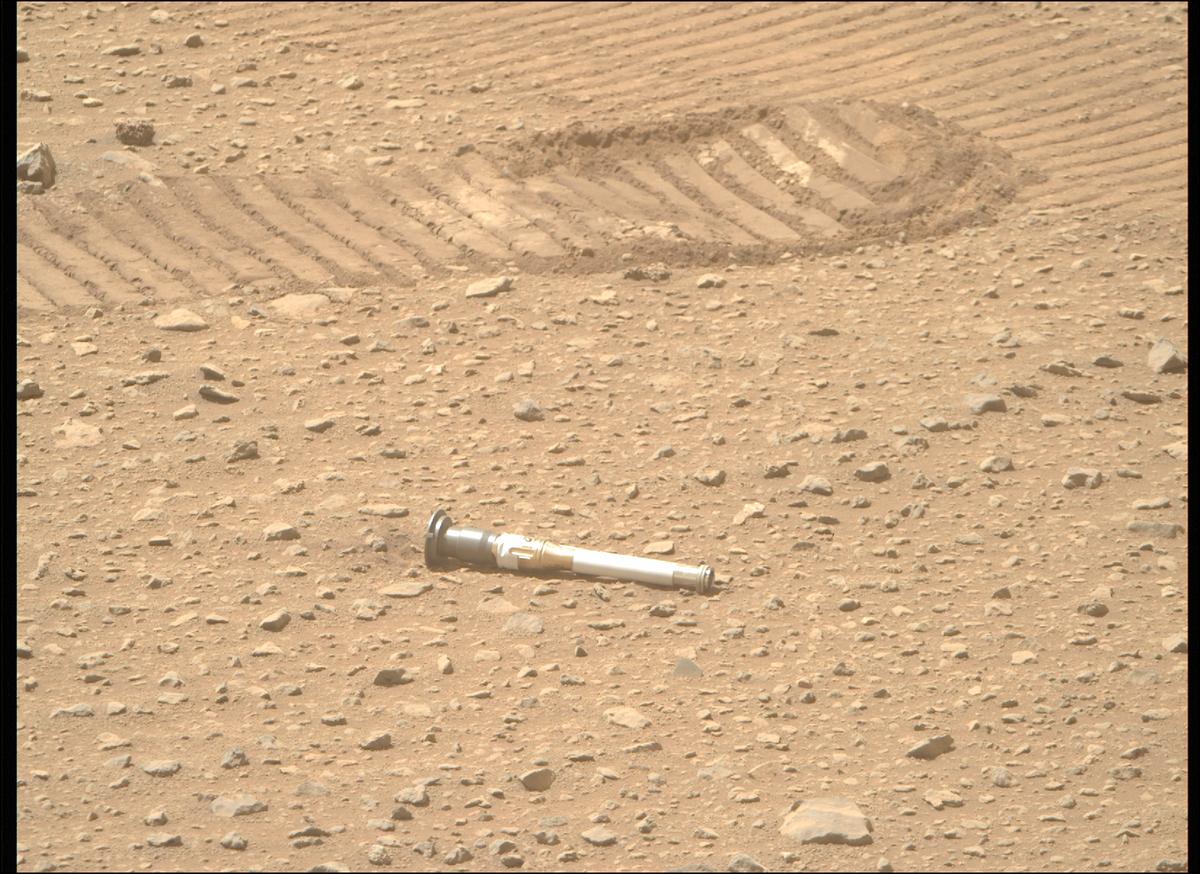3 min read

What do you see in the picture above - an abandoned lightsaber dropped by a Jedi Knight, lying forgotten amidst the Tattoine sand? It may look like a scene straight out of Star Wars, but sometimes life imitates art. The apparent “lightsaber” is actually an ~18 cm (~7 in) long sample tube holding a rock core drilled by NASA’s Perseverance rover, collected from Jezero Crater, Mars, for potential return to Earth. Instead of a long time ago in a galaxy far away, this little tube was dropped just a few days ago on January 3, 2023, at a carefully selected spot in the “Three Forks” region, which lies within a desiccated ancient lakebed on the surface of Earth’s neighboring planet. This tube is one of 10 that are currently being deposited in a “depot-building” process that is expected to take about a month.
Perseverance spent nearly a full Martian year (which is 699 sols, or days on Mars - this corresponds to about 687 Earth days) collecting these samples during its “prime mission,” using onboard instruments to perform robotic analyses of rock and atmosphere to help scientists and engineers decide where to drill each core. So far, Perseverance has taken two paired cores during each sampling event, placing one in the Three Forks backup cache (set of samples) and storing the duplicate onboard in a primary cache that will stay with the rover as it continues its traverse up to the top of the delta. During this “extended” phase of the mission, more samples will be added to the primary cache, which will be carried by Perseverance as the traverse across the delta continues. One of the caches will be collected and returned to Earth as part of the Mars Sample Return (MSR) mission in 2031.
When the time comes, another spacecraft will fly from Earth to Mars, land the Sample Retriever Lander near the rover (or the dropped cache), retrieve the samples using the force - or Sample Recovery Helicopters modeled after Mars 2020’s Ingenuity, launch the core collection off the surface with the Mars Ascent Vehicle, rendezvous with the European Space Agency’s Earth Return Orbiter, and finally make the traverse back to Earth in a journey that will take about 12 parsecs - give or take eight months - so that scientists can study these fascinating samples right here at home for decades to come!
Written by Denise Buckner, Student Collaborator at University of Florida







